Creating Flexible Data Governance Frameworks for Multi-National Enterprises

Introduction: Why Global Enterprises Need Adaptable Governance
In an interconnected global economy, data moves across borders as seamlessly as goods and services. Whether it’s customer information, HR records, or financial data, multinational companies must manage information flows that span diverse legal landscapes. With that comes responsibility: different jurisdictions, varying privacy laws, and heightened expectations from regulators and consumers.
Many organisations find themselves caught in a web of conflicting rules, trying to balance compliance with operational efficiency. How do you build a governance framework that handles both complexity and change? The key is flexibility. This briefing outlines the steps to create a responsive, scalable data governance model built for multinational operations.
Understanding the Governance Challenge in Global Organisations
Managing data across countries isn’t just about internal processes. It also means aligning with regulations that govern how data is collected, used, stored, and shared. Let’s explore three of the most pressing challenges:
1. Adapting to Varied Data Privacy Laws
Take data from the EU processed in the US. The regulatory implications are far from simple. Each country has its own approach to privacy. The EU’s GDPR mandates strict consent requirements and limits on data transfer. In the US, laws vary by state, such as California’s CCPA. In Asia, different rules apply for example Japan enforces APPI, while China mandates controls under its Data Security Law.
Now imagine operating in both Germany and Singapore. Germany requires explicit consent under GDPR, while Singapore’s PDPA allows implied consent. A rigid approach won’t work, you need tailored responses that align with each region’s rules.
2. Managing Data Across Global Infrastructures
A company might process data in US-based servers but store backups in Europe. On paper, it’s straightforward. But in practice, each data transfer activates legal requirements. As data flows between systems and borders, it must remain compliant at every step.
Consider an organisation that processes EU customer data, uses US infrastructure for analytics, and shares results with a vendor in Australia. Every transfer must comply with local laws. This requires visibility, control, and local compliance alignment without adding friction.
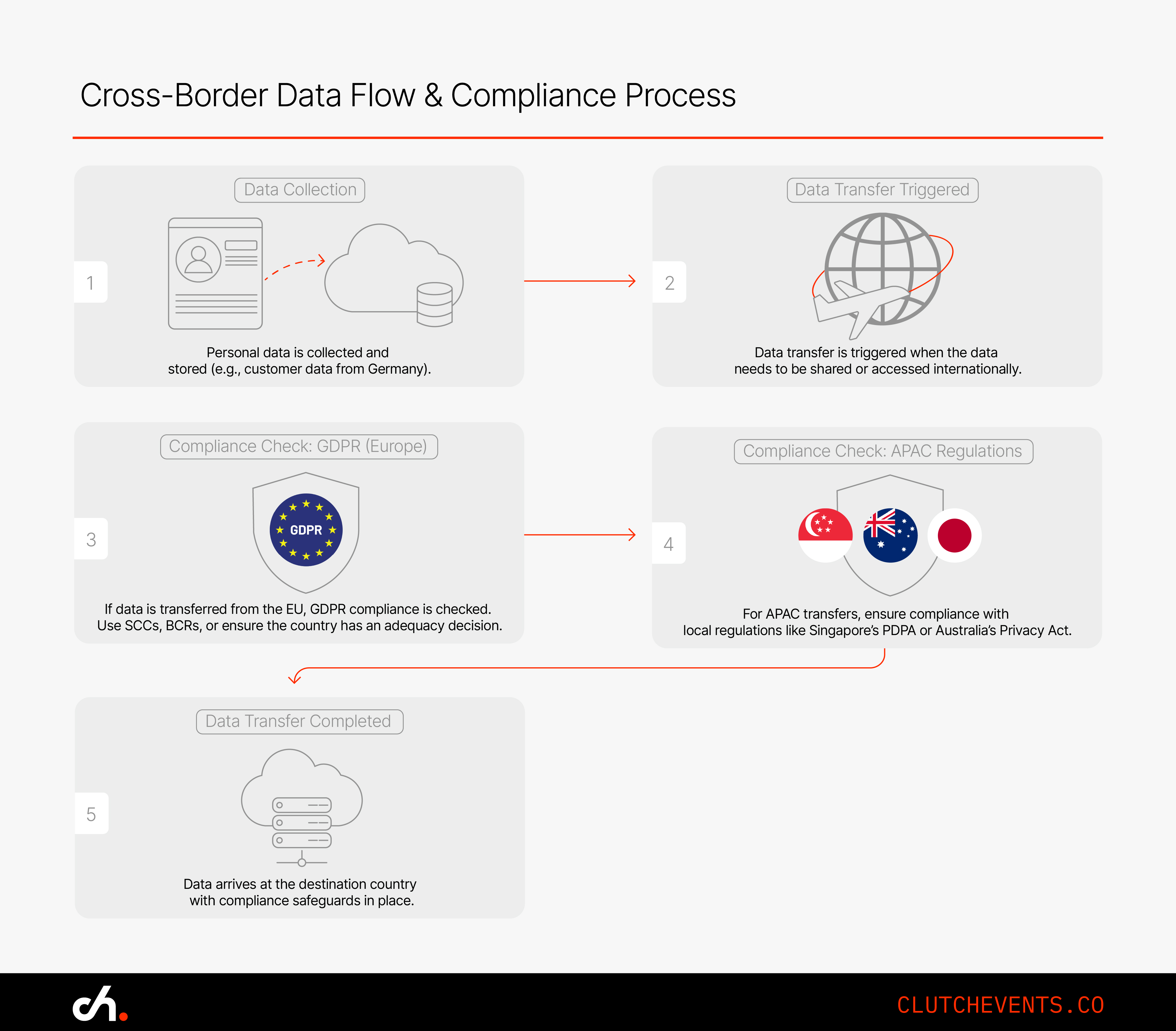
3. Ensuring Security and Privacy at Scale
Data breaches can happen anywhere, but with multinational operations, inconsistent security practices become real liabilities. Applying GDPR-grade encryption in Europe and weaker controls elsewhere invites risk.
A resilient governance model applies consistent security standards across all locations treating strong regulations not as exceptions, but as benchmarks for global practice.
Designing a Framework That Works Globally
Here are the essential components for a governance system that adapts across countries and teams:
1. Define Central Governance with Regional Autonomy
Establish a global data governance council that owns enterprise-wide policies. Then empower regional teams to adjust and enforce them locally. This ensures alignment without sacrificing flexibility.
For example, the global team can set encryption and retention baselines, while local teams tailor consent and data-handling procedures.
Practical Step: Form a central governance body and appoint regional data stewards. Give them clear responsibilities and tools to localise implementation.
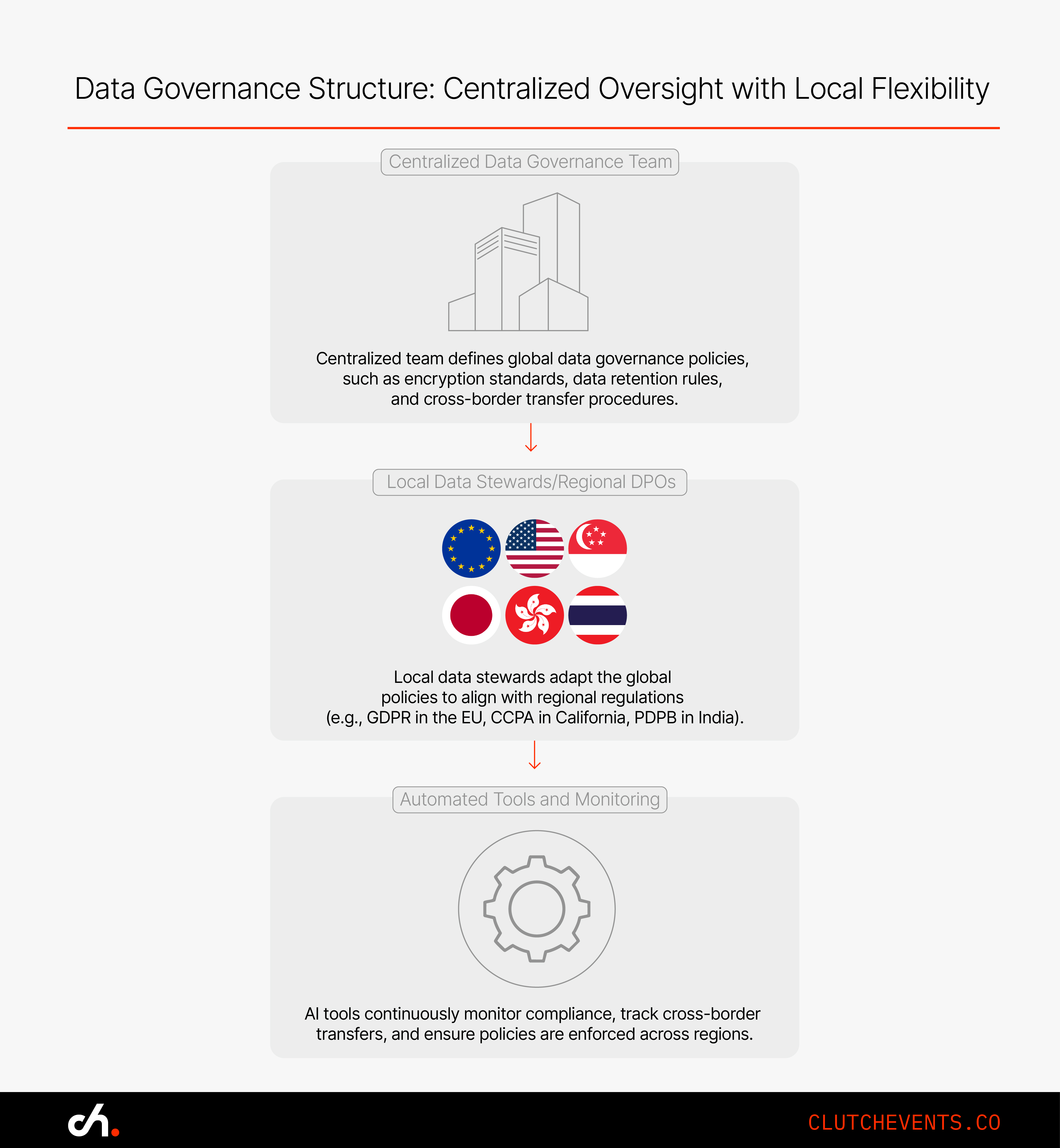
2. Classify Data by Sensitivity and Regulation
You can’t protect what you don’t understand. Start by building a classification system that sorts data into levels of sensitivity. Personal identifiable data should be flagged for stricter controls, while non-sensitive analytics data might require lighter protection.
Use AI-assisted tools to automate classification based on risk, region, and regulatory status.
Practical Step: Implement a classification protocol that tags data by use case and legal requirement. Automate the process to reduce human error and scale globally.
3. Automate Compliance with AI
Manual compliance tracking is slow and error-prone. AI tools can monitor cross-border data flows, flag violations, and apply required safeguards like Standard Contractual Clauses or Binding Corporate Rules in real time.
AI can also enforce data minimisation by deleting or anonymising data after its retention period ends.
Practical Step: Invest in AI tools that provide real-time alerts, automate enforcement, and log activity for audit readiness.
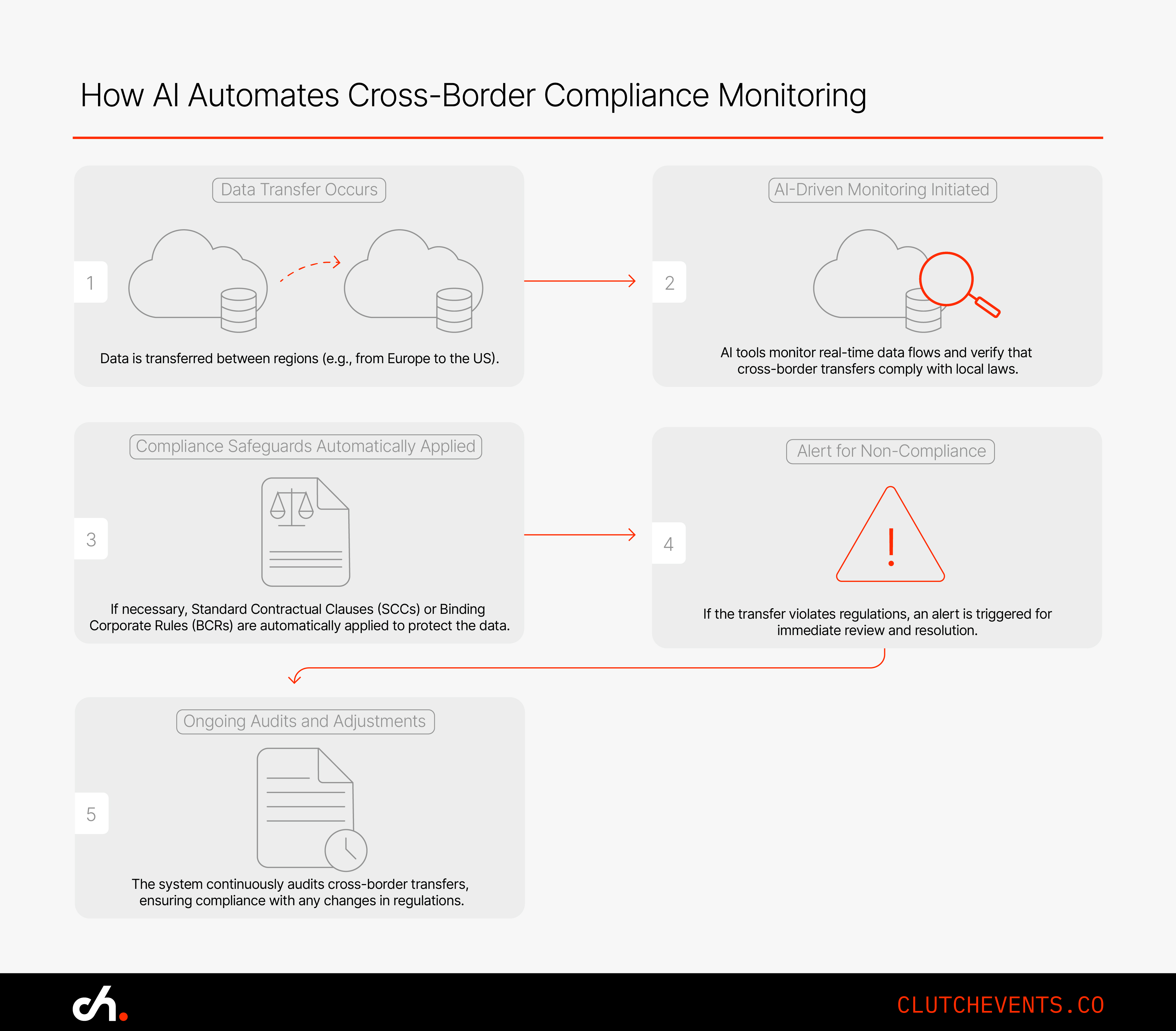
4. Build Privacy into Every Product
Privacy shouldn’t be an afterthought. If you’re launching an app that collects user data, privacy settings should be part of the initial design including consent forms, encryption standards, and data-sharing options.
Use Data Protection Impact Assessments (DPIAs) to embed privacy in development lifecycles.
Practical Step: Make privacy by design part of every new initiative. Require DPIAs before product launches or major updates.
5. Track Regulatory Shifts and Respond Fast
Data protection laws are evolving rapidly in regions like Brazil, India, and China. New rules can impose localisation, consent, or breach reporting requirements.
Without a monitoring system, it’s easy to fall out of compliance. Timely updates to governance policies are essential.
Practical Step: Deploy systems that scan for legal changes and trigger internal policy reviews. Assign responsibility to governance teams for rapid updates.
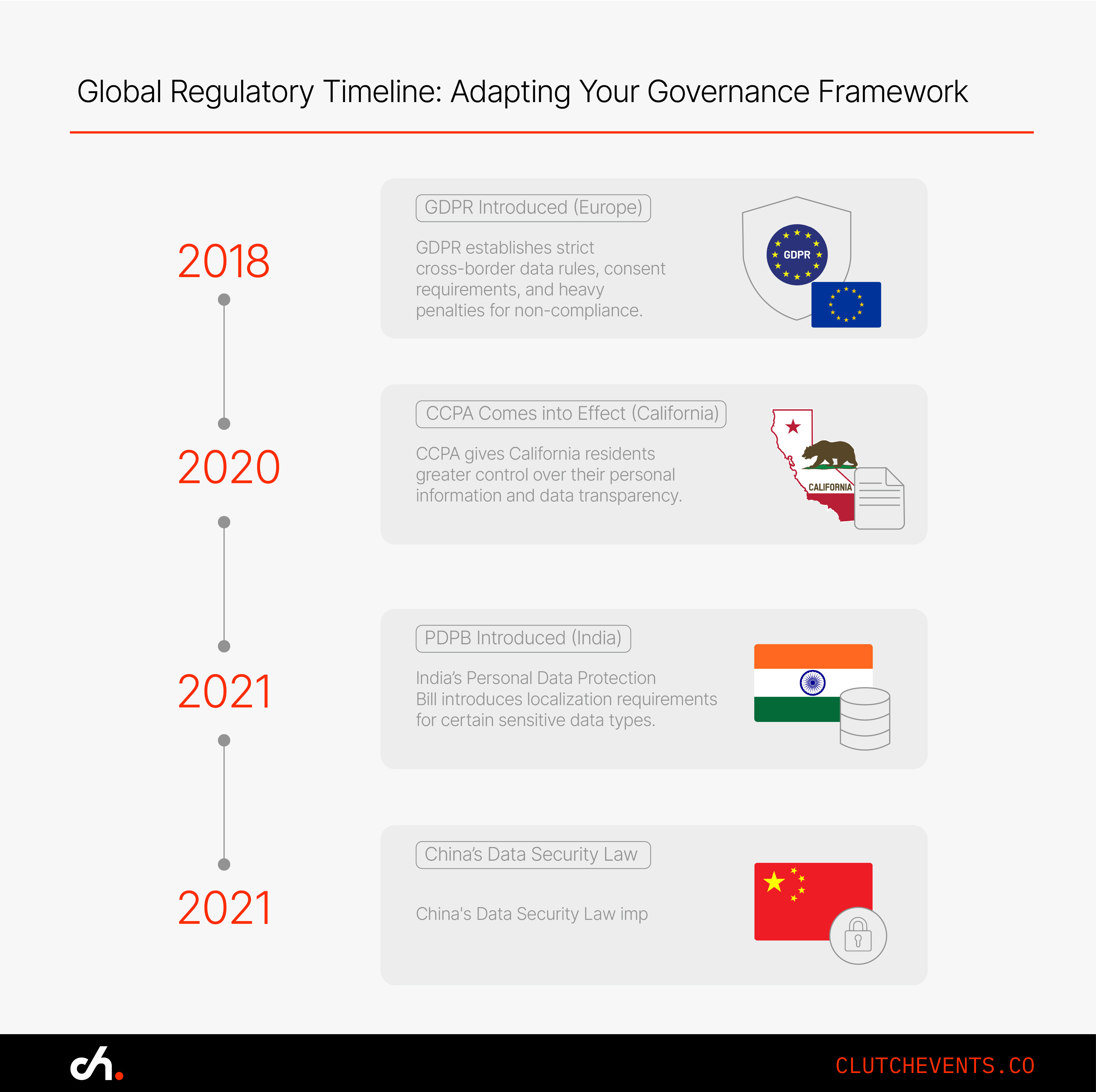
6. Enforce Role-Based Access and Encryption
Control access to sensitive data by assigning permissions based on job function. Use end-to-end encryption for critical datasets. Combine these with regular audits to check if access controls are being followed across all business units.
Practical Step: Apply RBAC and encrypt data in transit and at rest. Run periodic reviews to catch misconfigurations or unauthorised access.
A Real-World Model in Action
A leading technology company operating in over 50 countries needed a flexible data governance solution. They created a central governance council that established global policies while regional data officers adapted those policies locally.
AI systems monitored transfers and enforced controls, applying SCCs automatically where needed. The company implemented classification rules that elevated high-risk data for encryption and compliance checks. Every new initiative followed privacy by design principles.
The result: smoother expansion, consistent compliance, and a stronger global security posture.
Preparing for What’s Next
Data localisation is becoming more common. Countries like India and China are tightening control over how and where data can be stored and processed. Enterprises need to be ready to comply without disrupting operations.
The future of governance lies in adaptability. Enterprises that build dynamic frameworks which are grounded in automation, guided by clear structure, and responsive to change will be better positioned to protect data and grow with confidence.
Checklist for Building a Flexible Governance Model
- Map your data flows using discovery tools
- Categorise data by sensitivity and legal requirement
- Automate compliance tasks with AI
- Give local teams authority to tailor policies
- Monitor legal developments and adjust accordingly
Global compliance isn’t static. It’s a moving target. The right framework won’t just keep you compliant it will empower your business to move faster, safer, and smarter.
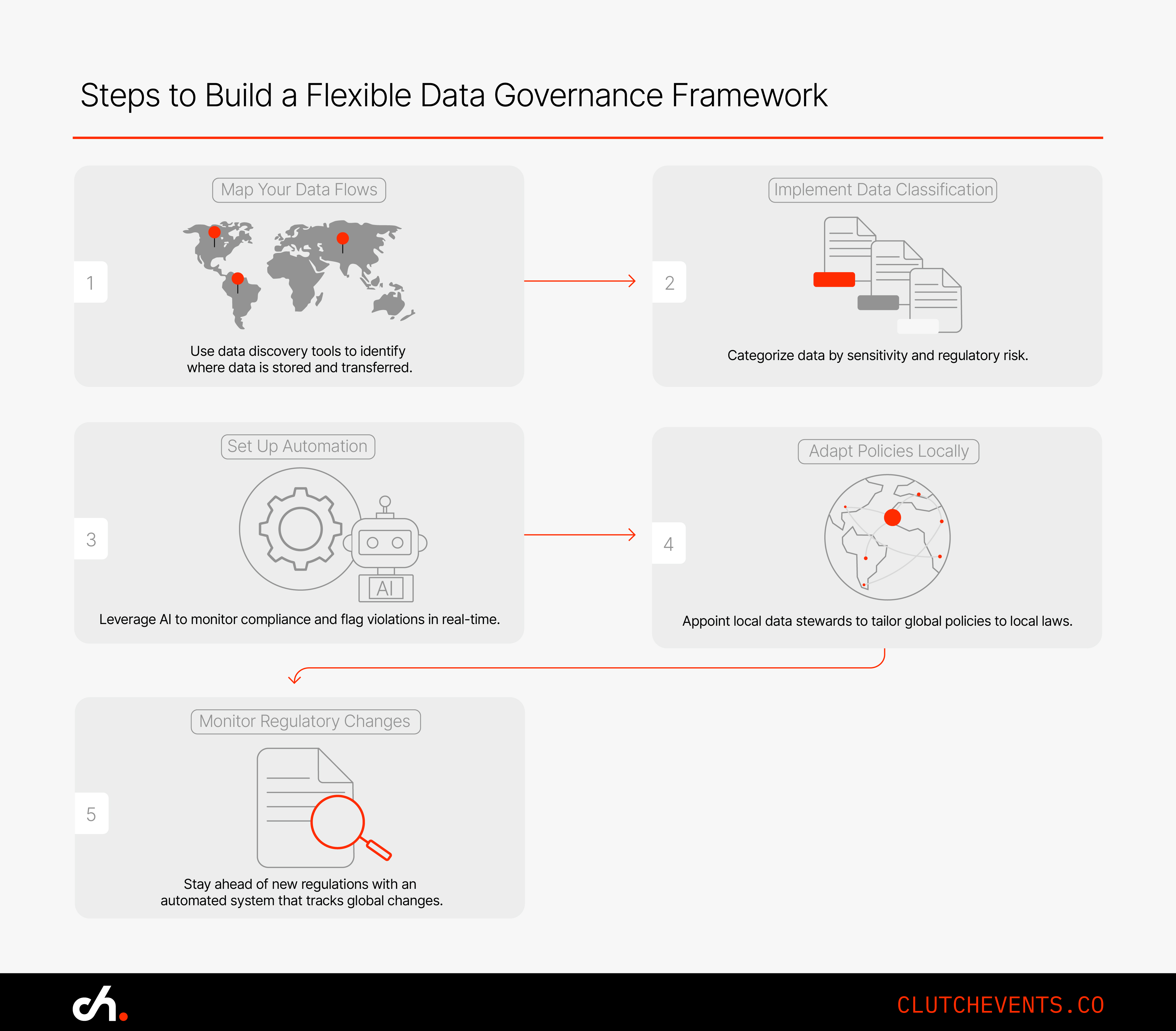
Related Resources
Find your Tribe
Membership is by approval only. We'll review your LinkedIn to make sure the Tribe stays community focused, relevant and genuinely useful.
To join, you’ll need to meet these criteria:
> You are not a vendor, consultant, recruiter or salesperson
> You’re a practitioner inside a business (no consultancies)
> You’re based in Australia or New Zealand


